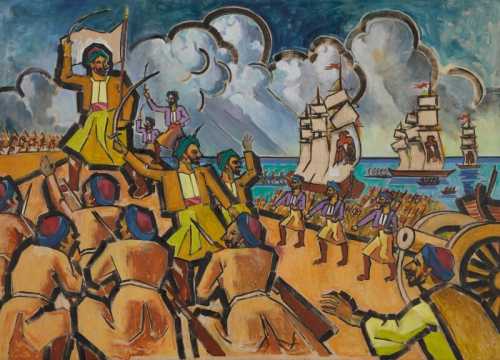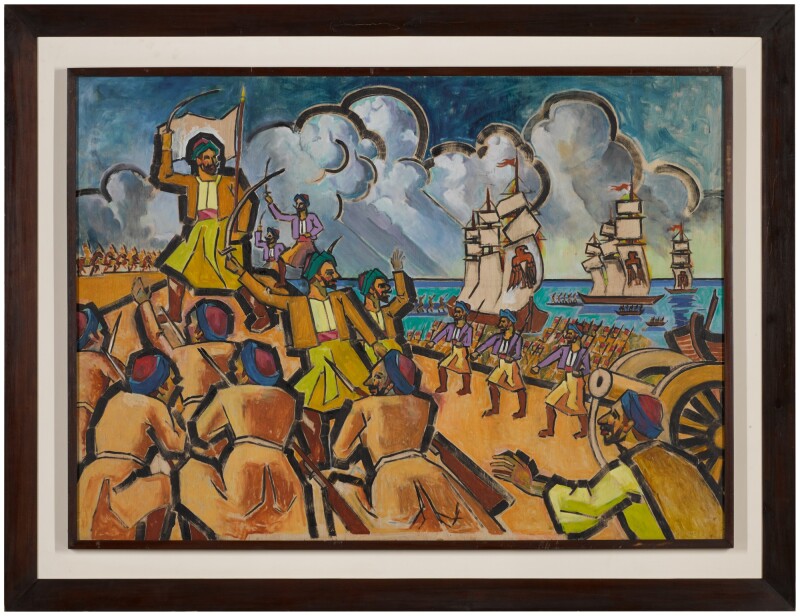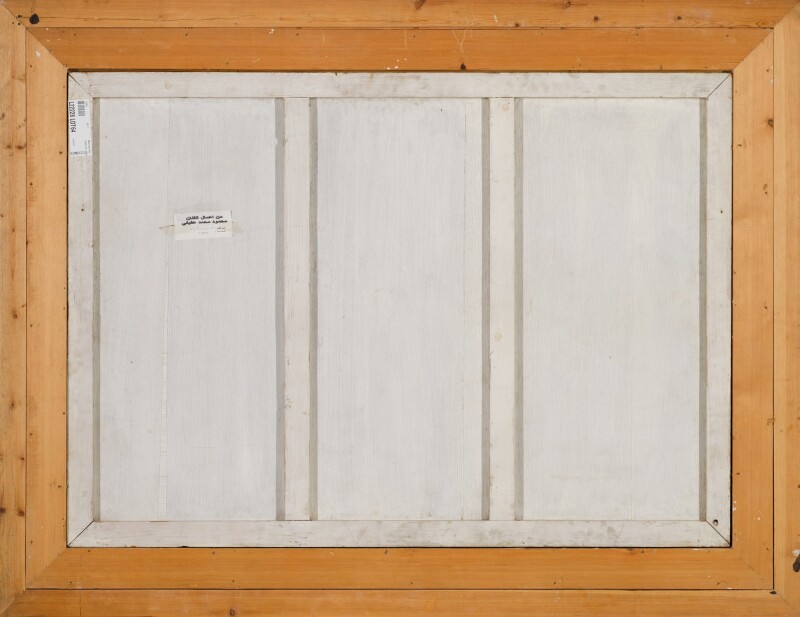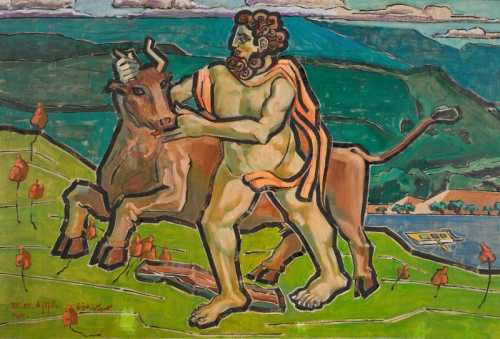- Untitled 1982
- oil on board
- Painting
- 118.5 * 84.5 cm
- dated 1982framed: 111 by 145 cm. 43¾ by 57 in.
23 March 2022
Estimation
£8,000
10,547 USD
-
£12,000
15,821 USD
Unsold
Artwork Description
Tariq ibn Ziyad was an Ummayad general of Berber origin who made history in the late seventh, early eighth century. Most biographical records position him as a former slave who slowly gained favours before eventually leading the Ummayad army himself. His prominent role in the Muslim conquest of the Iberian Peninsula earned him enduring posterity in both the Arabic and Spanish collective imagination. Tariq is mainly known for having led a large army from the Moroccan Northern shore straight into the heart of Spain, to support the heirs of a Wisigoth king against their local rival during the civil war. His legendary journey left his name to the Strait of Gibraltar (from « djebel Tariq », ‘the Mountain of Tariq’) as well as many popular visual representations (Molina 2000).
This painting is characteristic of Afifi’s “Hard Edge” style, which earned him the nickname of the “Egyptian Rouault”. The strong, thick black lines infuse a strong vitality to the scene, depicting Tariq exhorting his troops moments before the invasion of Spain. Afifi (1920-1984) often used his signature technique to reclaim historic battles as a symbol of regional resistance (Almasar Gallery). Under his brush, the Egyptian spirit of revolution is immortalized, rising again after centuries during the agitated period that Afifi witnessed in Egypt during his lifetime.
Almasar Gallery, 2008. Mahmoud Afifi. Accessible at: http://almasargallery.com/mahmoud-afifi-2/
Molina, L. (2000). Ṭāriḳ b. Ziyād. In Bearman, P. J.; Bianquis, Th.; Bosworth, C. E.; van Donzel, E. & Heinrichs, W. P. (eds.). The Encyclopaedia of Islam, New Edition, Volume X. Leiden, pp.242-243.
More lots by Mahmoud Afifi
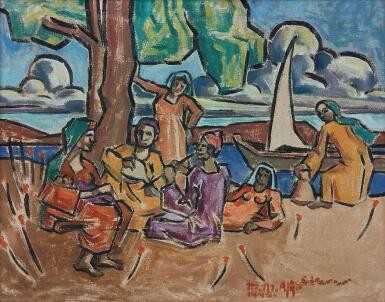
Untitled (Musicians)
Estimation
£6,000
8,000 USD
-
£8,000
10,667 USD
Sale Date
Sotheby's
-
1 May 2025
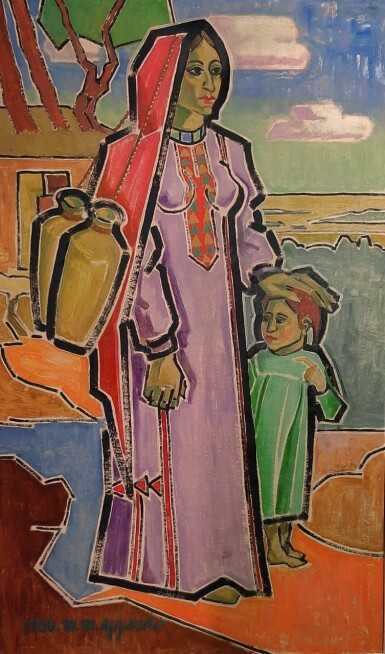
Untitled (Mother and Child)
Estimation
£8,000
10,667 USD
-
£12,000
16,000 USD
Sale Date
Sotheby's
-
1 May 2025
Realized Price
32,096 USD
Min Estimate
10,999 USD
Max Estimate
15,119 USD
Average Artwork Worth
+151.3%
Average Growth of Artwork Worth
Sales Performance Against Estimates
Similar Artworks
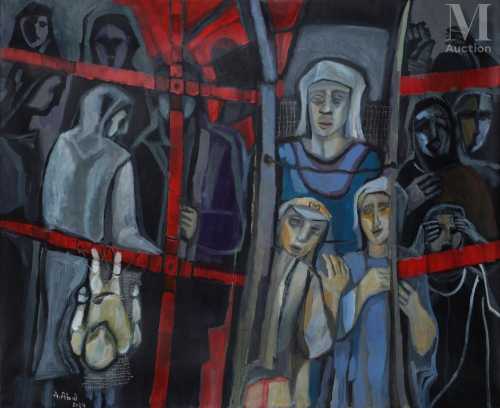
In the shadow of the agression
Estimation
€5,000
5,214 USD
-
€8,000
8,342 USD
Realized Price
€5,000
5,214 USD
23.077%
Sell at
Sale Date
Millon & Associés
-
19 December 2024
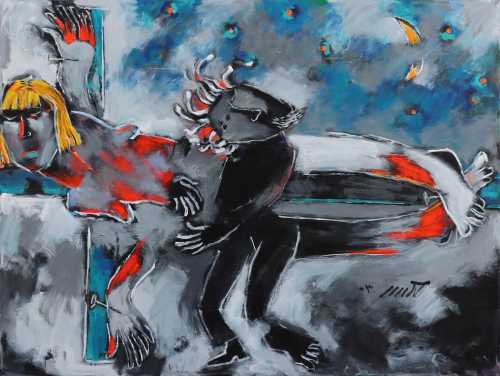
Untitled
Estimation
2,000,000,000﷼
1,759 USD
-
2,200,000,000﷼
1,935 USD
Realized Price
1,350,000,000﷼
1,187 USD
35.714%
Sale Date
Smart Auction
-
7 October 2025
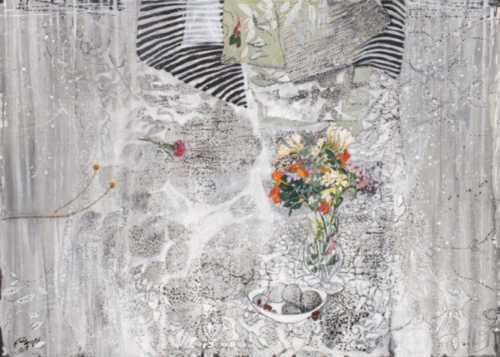
Beginning of Spring from the Still Life series
Estimation
2,000,000,000﷼
3,333 USD
-
3,000,000,000﷼
5,000 USD
Realized Price
2,200,000,000﷼
3,667 USD
12%
Sale Date
Tehran
-
5 July 2024
